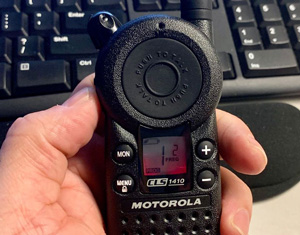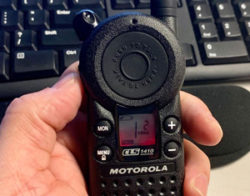UPDATE - The FCC reformed the Part 95 rules in 2017 and the rule mentioned in the article below that provided the uncertainty was removed. The rules clearly indicate that only a Part 95E approved radio can be used on the GMRS. The current rule is as follows:
§ 95.1761 GMRS transmitter certification.
(a) Each GMRS transmitter (a transmitter that operates or is intended to operate in the GMRS) must be certified in accordance with this subpart and part 2 of this chapter.
The original article is below.
It's no big secret that most two way radios that are built specifically for the General Mobile Radio Service (GMRS) are not of the same quality as typical business radios. There's a good reason for this. Most people who are shopping for GMRS radios need a radio for occasional use, such as a camping trip, and simply prefer a lower priced radio that will get the job done. Occasionally, however, we have customers who need a business quality radio for use on GMRS.
Who Needs A Business Quality Radio For GMRS
These customers typically use their radios often - not just for an occasional hike with the family. They are sometimes looking to become members of a local radio or repeater club, or are radio enthusiasts in general. Perhaps they've purchased "bubble pack" GMRS radios (as typical 2-pack consumer grade radios are sometimes called) in the past and are just looking for better range, better audio quality, or more durability.
There is a reason that business quality radios sell for 6-10 times more than consumer grade radios - they're better. Whatever the reason, we often hear from a potential customer who is looking for a high quality GMRS radio.
Business Radios That Work On GMRS
Most all programmable UHF business radios can be setup to work on the GMRS. This includes practically all 4 and 5 watt business radios that we sell, including models by Icom, Kenwood, Motorola, Olympia, and Vertex Standard. Business radios that are two watts and less typically wouldn't work, as they have a built-in list of frequencies that do not include GMRS.
Is It Legal To Use A Business Radio For GMRS?
It is not entirely clear if it is legal to use a business radio for GMRS. Business radios that would be programmable to GMRS are going to be Part 90 type accepted (certified). This basically means that the FCC has found them to conform to the "Part 90" rules, which relate to land mobile or business radios.
The rules that apply to GMRS are in Part 95, and this is what "bubble pack" radios are type accepted for. While it is possible for business radio manufacturers to have their Part 90 radios also type accepted for Part 95, most do not. (Kenwood is the exception here and the TK3302 and TK3230 are certified for parts 90 and 95.)
The following is the specific section of the law that applies to GMRS equipment:
§ 95.129 Station equipment.
Every station in a GMRS system must use transmitters the FCC has certificated for use in the GMRS. Write to any FCC Field Office to find out if a particular transmitter has been certificated for the GMRS. All station equipment in a GMRS system must comply with the technical rules in part 95.
Many interpret that last sentence (our emphasis) to mean that as long as the radio is technically compliant with part 95, it is OK to use even if it wasn't specifically type accepted for it. Under this interpretation, Part 90 accepted UHF business radios would be allowed. (One caveat is scrambling. Some business radios support it but it cannot legally be used on GMRS.)
For an in-depth discussion on this topic, listen to The Two Way Radio Show TWRS-38 - Using Business Radios on the GMRS.
 If you're changing the frequency on your Motorola CLS series radio, you're going to quickly realize that the radio doesn't show you the actual frequency. Instead, it allows you to select a number between 1 and 56 that relates to a frequency. For example, if you need frequency 467.900, you'll want to select frequency number 7.
If you're changing the frequency on your Motorola CLS series radio, you're going to quickly realize that the radio doesn't show you the actual frequency. Instead, it allows you to select a number between 1 and 56 that relates to a frequency. For example, if you need frequency 467.900, you'll want to select frequency number 7. 






